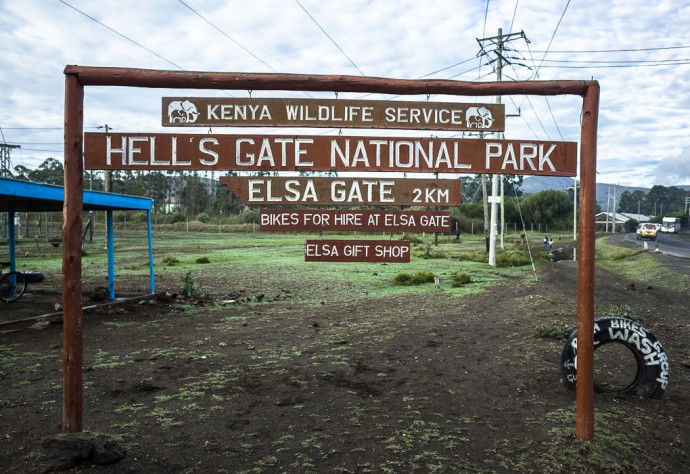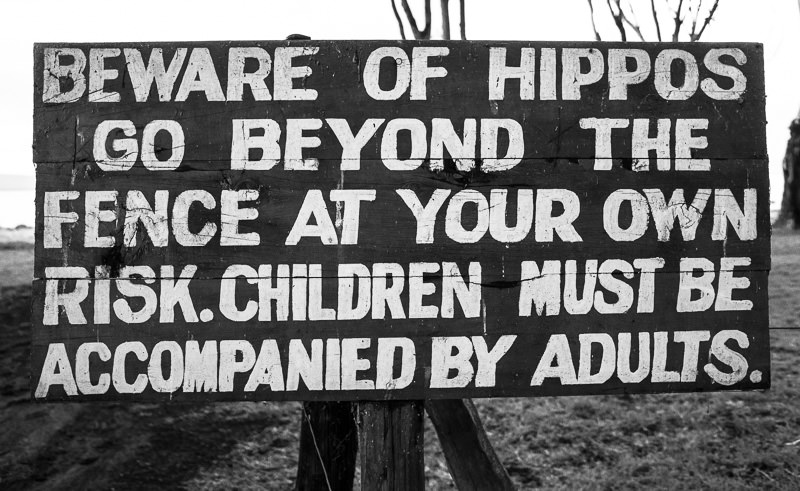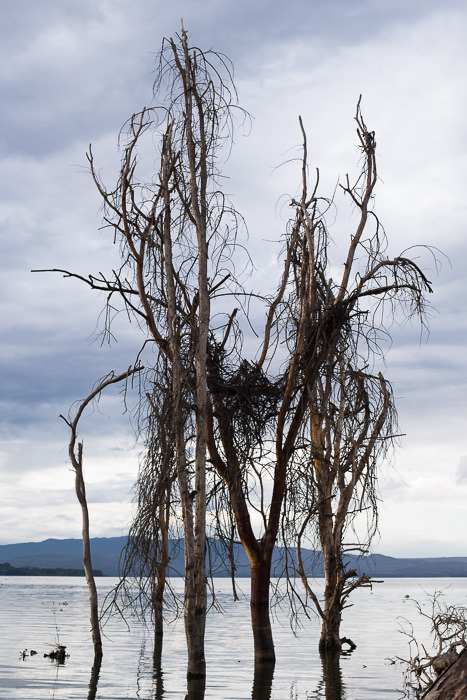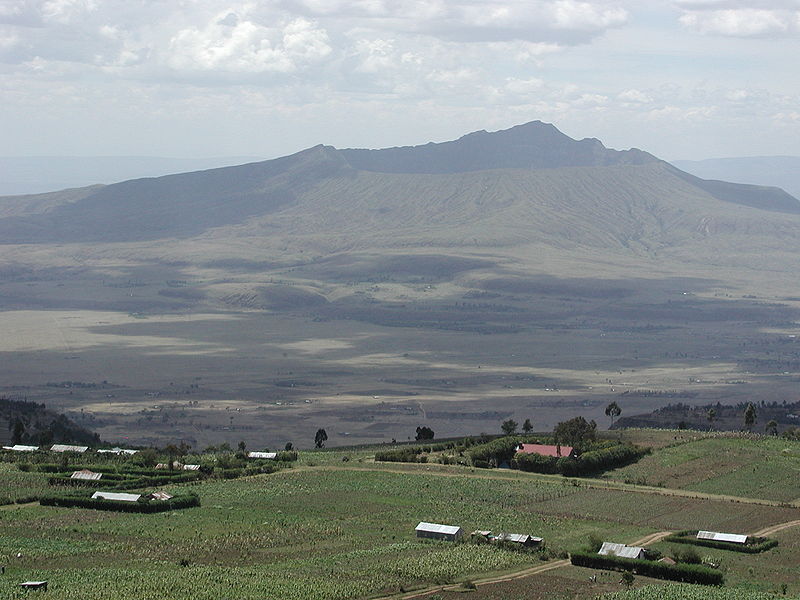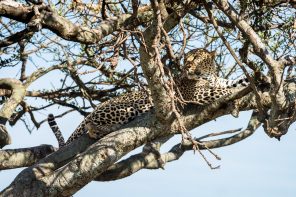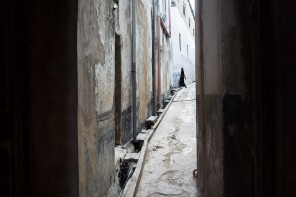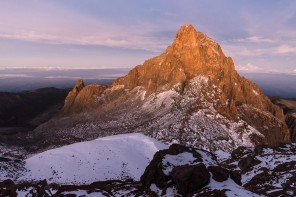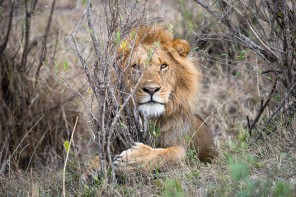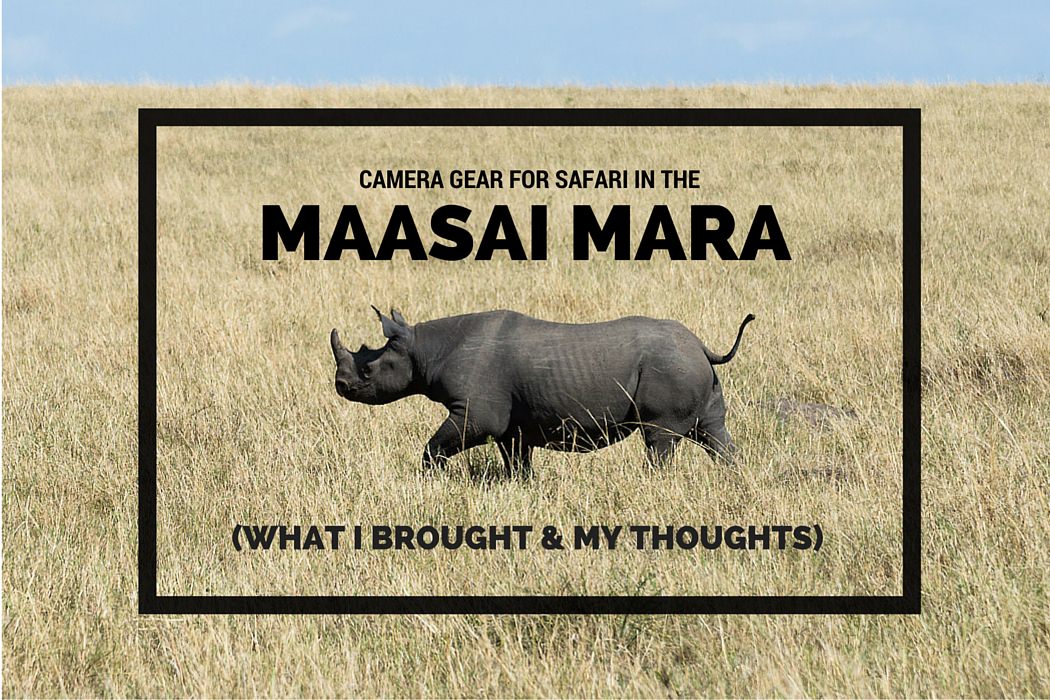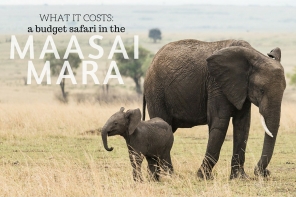Navaisha is a Kenyan rift-valley town positioned between Nairobi and Nakuru that anyone touring Kenya stands a good chance of passing through. But what are the reasons to stop here, and what can you do with one day in Naivasha? You can see some wildlife by bicycle, you can chill out at the lake of the same name, or you can trek up a volcano.
I spent two nights and one day in Naivasha / Lake Naivasha in October of 2015.
How to Get to Naivasha
Getting to Naivasha from Nairobi or other parts of central/western Kenya is particularly easy.
If you’re coming from Nairobi, just head to the River Road area of Nairobi’s Central Business District to begin. Any matatu (minibus) heading for either Naivasha (or Nakuru for that matter) should be able to get you to Naivasha. Matatus are generally well-marked and bus captains should help you find the right bus without any issues.
When it’s time to disembark from your matatu from Nairobi: bear in mind that you will be dropped in the city of Naivasha – NOT on the banks of Lake Naivasha, where you’ll likely want to stay. To get to the lake itself, where most people stay (and the closest area to Hell’s Gate National Park), hop another matatu from Naivasha town to Lake Naivasha (100 Kenyan shillings). In my experience, matatu men / touts in Naivasha town were particularly aggressive and annoying – these guys were grabbing my backpack and trying to steer me into their vehicle. I told everyone NOT TO TOUCH ME and proceeded to pick a nearly-full matatu for onward transit, as matatus generally do not leave until they are full.
If you’re not coming from Nairobi, but rather, from a budget safari in the Maasai Mara (like I did), you’ll likely take a matatu from Narok city direct to Naivasha town. This ride cost me 300 Kenyan Shillings. Getting from Nakuru town to Naivasha should be similarly easy.
Note that as you transit from Naivasha town to the southern side of Lake Naivasha, you’ll see a lot of massive white buildings. These are flower plantations, where much of the local population works.
Sleeping in Naivasha
It’s best to know where you are staying in Lake Naivasha before you arrive, as lodgings are somewhat spaced out, and it wouldn’t be great fun to walk between them. Most backpackers / budget travelers seem to stay at Fisherman’s Camp or Camp Carnelly’s, though I didn’t meet anyone that was particularly WOWED by either place.
A brief review of my stay at Camp Carnelly’s:
I stayed for two nights in the dorm at Carnelly’s, which cost me 1000 Kenyan shillings per night with shared bathrooms outside the room. There were unfortunately no mosquito nets in the rooms (and there were mosquitos), so I found myself waking up to smack my face and ears over and over again each night – not a great night’s sleep. Other complaints: there were no power outlets anywhere in the dorm room, so it was impossible to charge any of my electronics at night. There is also no WiFi anywhere on the property (I think this holds true at other budget lodging options in Naivasha as well). The dorms here just feel like a total afterthought and I just wasn’t a big fan of this place. No, it wasn’t HORRIBLE, but it just wasn’t GREAT.
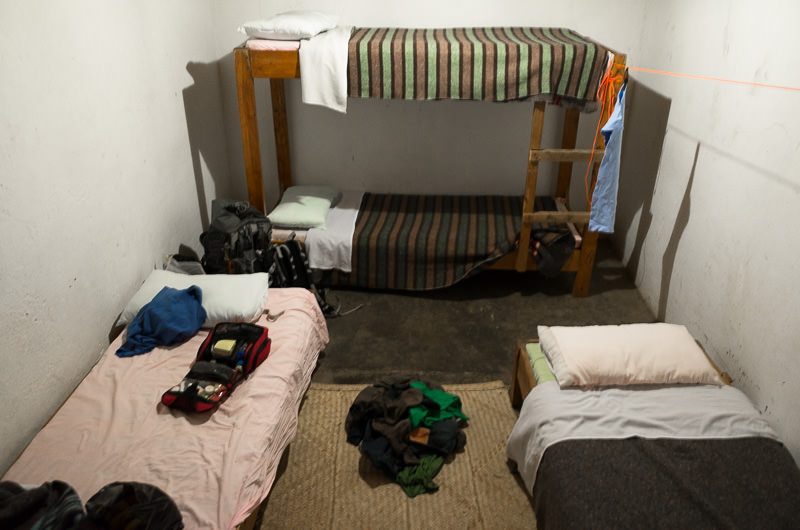
As much of the dorm as I could fit into one shot. Nothing super objectionable about it – but it’s just a basic concrete room with no power access and no mosquito nets. Not quite “good enough” in my opinion.
The grounds at Carnelly’s were alright – not a whole lot to see, but a mass of huge acacia trees, and the chance to see hippos right from the camp itself. When you come to the waterfront of the lake, there’s a sign that warns you of the inherent danger of getting too close. I indeed did see hippos waddling about, munching grass on the property.
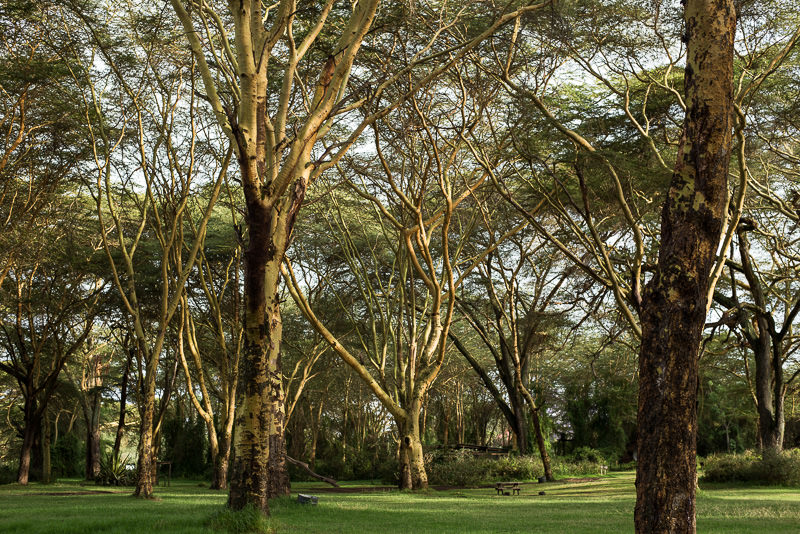
Huge acacia trees on the grounds of Camp Carnelly’s.
The restaurant at Carnelly’s was quite expensive for my tastes (but still not all that great), so I ended up walking out of the property and down the road for food each time I wanted to eat. Fortunately, I found a super pleasant little local restaurant a little ways down the road called Parkside Hotel that serves great food for under half the cost of the restaurant at Carnelly’s. For a full fried fish, rice palau and a couple of chais, I spent about 450 Kenyan shillings including tip. They do breakfast too (I spent 140 KSH on this). Oh, and the owner and employees were some of the nicest people I met on all of my trip. Go there!
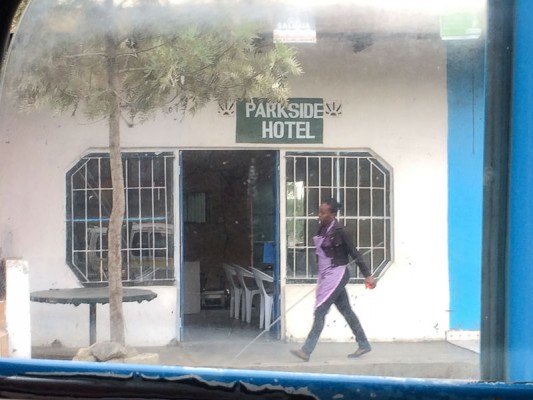
Please forgive my horrible dirty-window cellphone pic. Just wanted to show you the exterior of my favorite restaurant on Lake Naivasha!
What to do with One Day in Naivasha
The three most notable things to do in Naivasha / Lake Naivasha are:
- Bicycle Through Hell’s Gate National Park
- Visit Lake Naivasha itself, and/or its surrounding game reserves
- Trek up Mount Longonot
I expect that you can do about ONE to TWO of these things in one very full day of activity, depending on your access to transport and energy levels. If you want to cover all three of these things, consider scheduling two full days in Naivasha.
#1. Bicycle Through Hell’s Gate National Park
Hell’s Gate National Park is best known for being a national park one can bicycle through for wildlife viewing. It’s also the place Disney heavily modeled the setting of their animated film “The Lion King” on, given its dramatic landscape, especially on the eastern side of the park near the Elsa Gate entrance. Think high red cliffs and wide African plains, dotted by lone acacia trees. You can see a small variety of wild animals here – zebras, warthogs, giraffe, various antelope, a variety of birds, and buffalo. No big cats – that’s why you’re allowed to ride your bike there and aren’t confined to a jeep, after all. That said, best to keep a safe distance from any buffalo you see, as they can be dangerous and unpredictable. Also, there are a number of volcanic spires that can be climbed by rock climbers if that’s your thing.
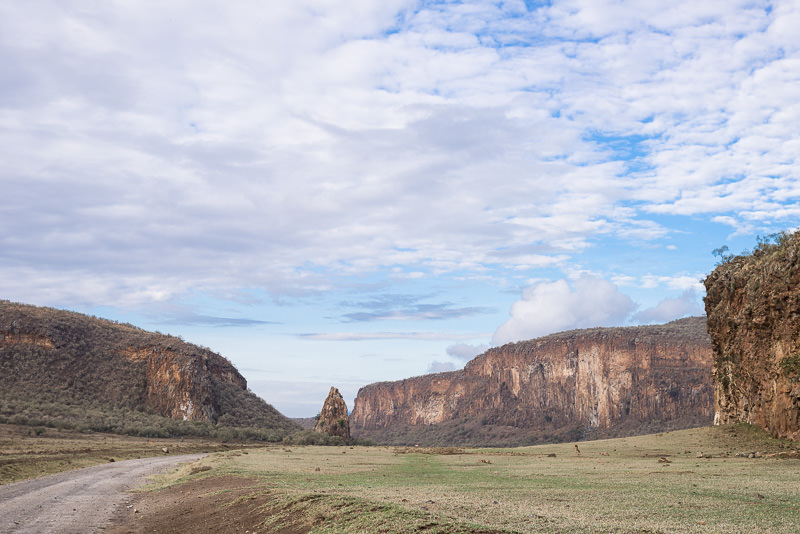
What’s likely to be your first look at the tall red cliffs of Hell’s Gate NP, as well as Fischer’s Tower (spire at center).
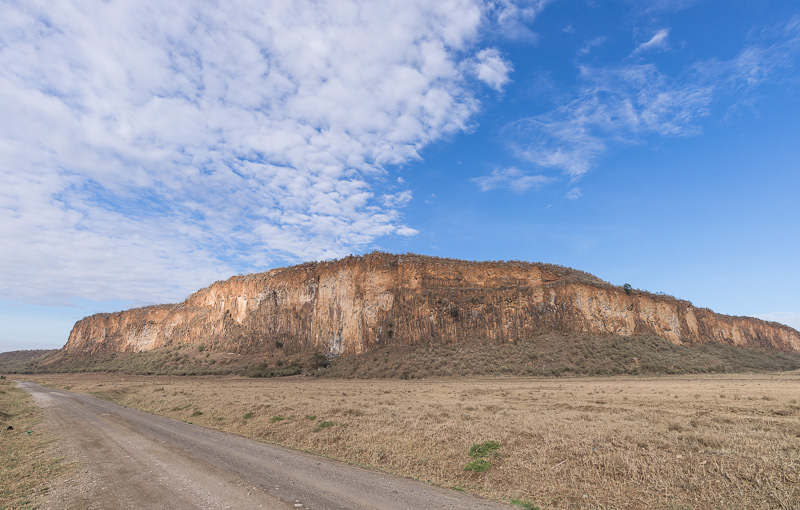
Another look at the cliffs of Hell’s Gate.
Entrance to Hell’s Gate National Park are 3250 KSH per person at the time of writing, plus a 250 “safety fee” (greedy bullshit fee) because I was riding a bicycle. So basically $35 US to get into the park. Renting a bicycle from Camp Carnelly’s cost me 800 KSH on top of this (I overspent – you should spend no more than 500 KSH on your bike for the day). So you’re in for around $40 US just to get into the park on a bike. This is a CONSIDERABLY lower cost than a day of game drives in a 4×4 in another Kenyan game park, but it’s still not CHEAP, and Hell’s Gate is also not as INTERESTING as many other game parks. Here’s why:
Wildlife is NOT anywhere near as impressive in Hell’s Gate as it is in other game parks in Kenya. You’re just not going to see the diversity nor density of wildlife that you’ll see if you visit parks like Maasai Mara, Samburu, etc. So temper your expectations. If you’re just coming from one of Kenya’s amazing wildlife destinations, you may be severely underwhelmed at Hell’s Gate NP, and might even consider skipping a visit. Yes, really.
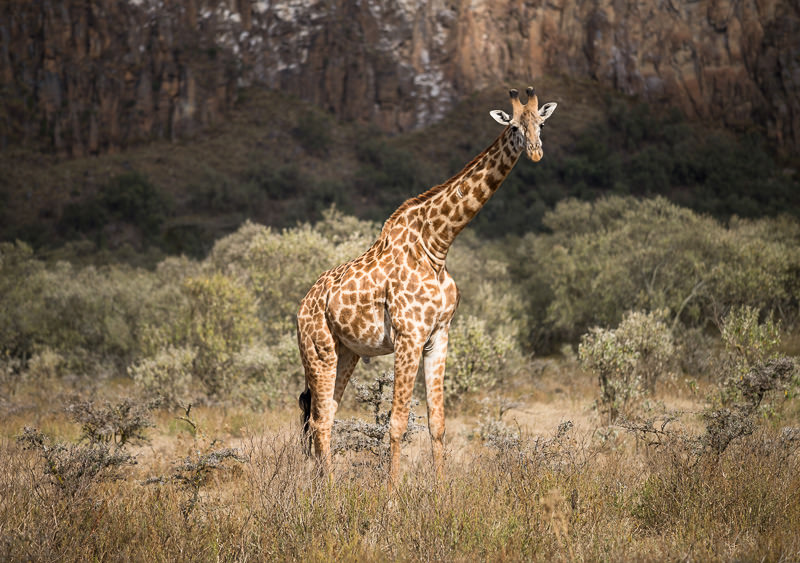
My favorite giraffe in Hell’s Gate, with cliffs to rear.
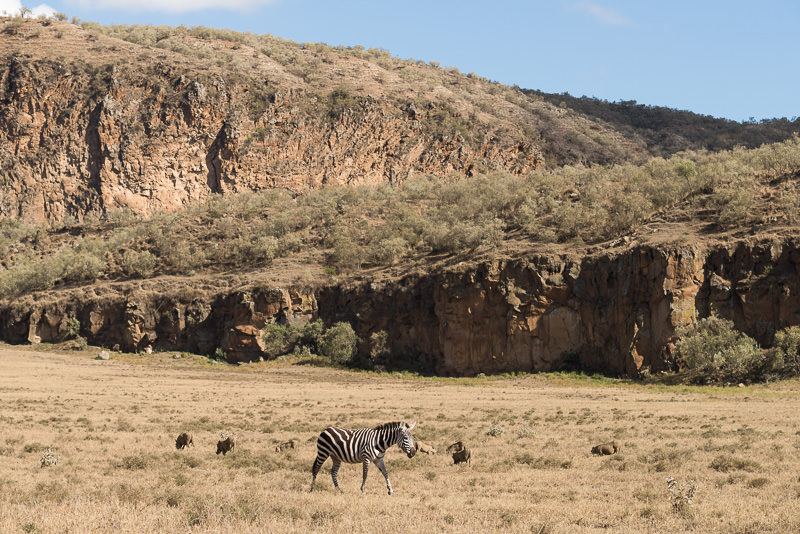
A pretty standard idea of what you’ll see in Hell’s Gate along the road: zebras and warthogs.
Another notable (and negative, in my opinion) aspect of visiting Hell’s Gate NP: nearly the entire western half of the park has been converted into a massive thermodynamic power plant called Olkaria. Yes, this plant is providing a great deal of low-impact renewable power for Kenya (which is good), but it’s an industrial complex that’s not pretty nor interesting to look at, and there’s no wildlife anywhere near it aside from some miscellaneous monkeys playing around the facilities. You don’t need to visit this part of the park in my opinion. To editorialize further: I don’t even understand why the power plant area should considered part of the national park any longer. I feel that it’s a bit dishonest to map out Hell’s Gate to include Olkaria plant at this point – it has nothing to do with what makes a national park a national park!
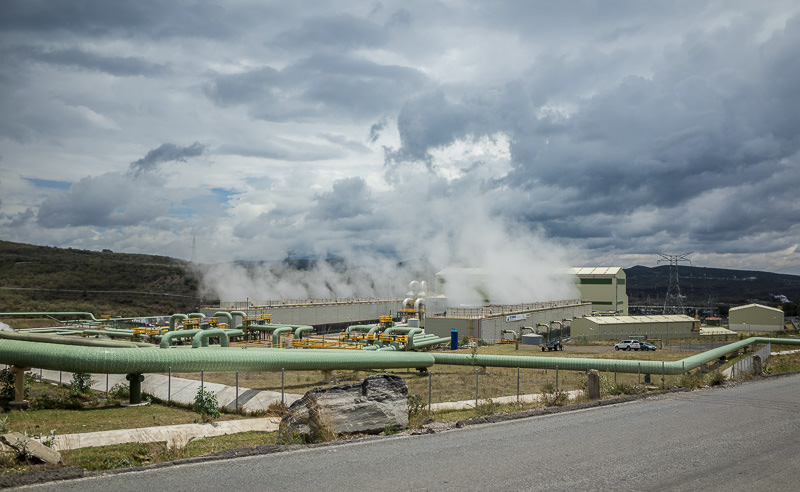
a view of Olkaria power plant, inside Hell’s Gate National Park.
Inside Hell’s Gate NP: an (optional) tour of the lower gorge
Centrally located in the park is a mo gorge that you can hike through with a guide for an extra charge of around 2,000 KSH per person (plus some sort of tip for your guide at the end – Kenya is SO big on tipping). Why the extra cost above and beyond your Hell’s Gate ticket? Well, the gorge is owned and run by a local Maasai tribe – not by the Kenyan government. So if you want to see the gorge, you’ve gotta pay more.
I paid to visit the gorge just to see what was there, and honestly, I don’t think it’s worth 2,000 KSH by any means. Maybe 800. But not 2,000. I spent about an hour there in total. My guide was nice. I didn’t have a bad time. But it’s just a lot of cash to spend for a place of relatively limited interest.
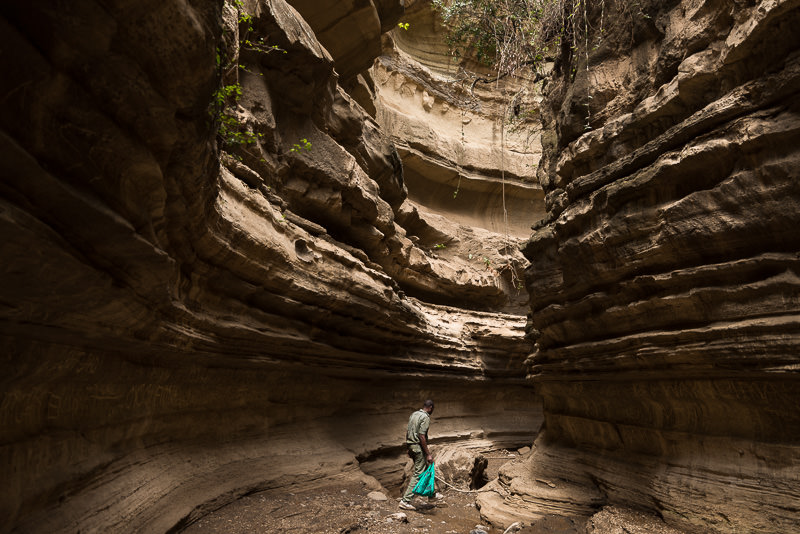
My guide walks through a curve in a deep section of the lower gorge. We picked up bottles and trash together throughout the hike – which is what’s in the plastic bag he’s carrying.
Also of note: the gorge is prone to dangerous flash floods, so be cautious about visiting the gorge if rain is falling, or is expected – people have died here before under bad circumstances. That said, you’ll see frequent, well-marked flash flood escape routes throughout the gorge, and guides are pretty cautious, so you shouldn’t run into problems.
Planning Your Visit to Hell’s Gate National Park: What to Know
I recommend you start your visit to Hell’s Gate National Park EARLY in the day – I believe the park officially opens at 6:30 AM. Most people should need about 4-5 hours total for a loop of the park, including an optional one-hour visit to the lower gorge (discussed above).
The logical place to enter the park is through ELSA GATE, on the northeast side of the park, accessible from the road along the southern side of Lake Naivasha. I biked to this gate from Camp Carnelly’s without issue. Entering from Elsa Gate will give you the best views of the tall red cliffs of the upper gorge in morning light – and the route from Elsa Gate through to the “lower gorge” area is the prettiest part of the park.
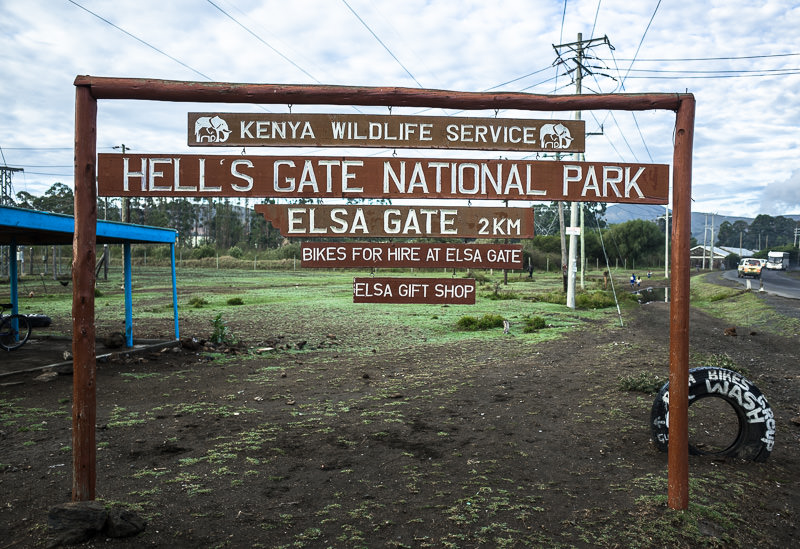
Once you get from Elsa Gate to the “lower gorge” area, the remainder of the route through the park is almost entirely uphill, through the sprawling Olkaria power plant facilities. I biked through all of this because I wanted to see what was there, and exited the park through Olkaria Gate, on the northwestern side of the park. But if I visited Hell’s Gate again, I’d probably just return from whence I came, out Elsa Gate. Also note that once you leave the park, you can’t return to it (or at least this was my experience).
Additionally: if you’re biking through Hell’s Gate NP, make sure to give your rental bike a solid once-over before you go. The bike I rented was pretty horrible, and by the middle of my ride I had lost functionality of my derailleur more or less altogether. This made hill climbing on the western side of the park near impossible, and I found myself walking the bike as much as riding it. Fortunately my tires didn’t go flat – I’m honestly surprised they didn’t!
Also: make sure to bring water and snacks to get you through your time in the park, as there’s nowhere to buy food or water inside.
#2. Visit Lake Naivasha Itself, and its Surrounding Game Reserves
Aside from a visit to Hell’s Gate NP, the lake itself is an obvious place for touristic interest. The main highlights here are either the lake itself, for which you can hire a boat for a lake tour (good chances to see hippos), or some of the private game reserves surrounding the lake.
I did not do either of these things, as I had seen both hippos and safari wildlife in the Maasai Mara just before my visit to Naivasha (and in Hell’s Gate NP for that matter) – plus, I wasn’t in a group and couldn’t justify paying for a boat all by myself for a lake tour.
Additionally, I found some of the Naivasha game reserves difficult to access given a lack of public transport to get to them, and/or a need for a 4×4 to tour through them. Not great options for a solo traveler moving by matatu, from my standpoint.
#3. Trek up Mount Longonot
Mt Longonot, 2,776 m (9,108 ft) is a climbable rift valley volcano located quite near to Naivasha, in Mt Longonot National Park, towering over the Naivasha area. Trekking up to its wide crater takes about 4-5 hours for a 13.5 km hike, with a 630m vertical gain (plus ups and downs along the way).
I didn’t trek up Mt Longonot, because my next stop in Kenya after Naivasha was Mt Kenya – I figured I’d save my trekking days for the bigger mountain. But if I were to return to Naivasha, going up Longonot would be the first thing I did, as I’ve heard good things about the trek and the views. Give it a shot if you have the time.
Should You Visit Naivasha / Lake Naivasha?
For those of you that live in Nairobi: Naivasha makes a lot of sense as a place to visit given its proximity to the capital. It’s an easy weekend visit to get a bit of nature and a couple of quiet nights without massive efforts. No brainer.
For travelers, Naivasha is still of interest, but of somewhat limited interest in my opinion. If you’re going to be hitting some of Kenya’s truly world class wildlife reserves (whether public or private), you might consider skipping Hell’s Gate National Park, as it just can’t compete with places like the Maasai Mara National Reserve in terms of wildlife diversity nor density. Plus the park is basically half power plant at this point, which isn’t exactly a compelling reason to drop in.
If you’re going to be climbing Mount Kenya, you might also choose to skip Mount Longonot to conserve time on your trip. Then again, each mountain is different and each trek is as well. I wish I could speak more intelligently about this highlight of the area, and would love to hear from others who’ve climbed Longonot in the comments below. Let me know!
Bottom line: in my opinion, Naivasha should be thought of as a potential place to spend a quiet day or two, but not as a location that’s going to be a mind-blowing highlight of a Kenya trip. Keep your expectations in check and you’ll do fine here. Thanks for reading!
If you’re planning a trip in Kenya, make sure to visit my collection of other posts here!

